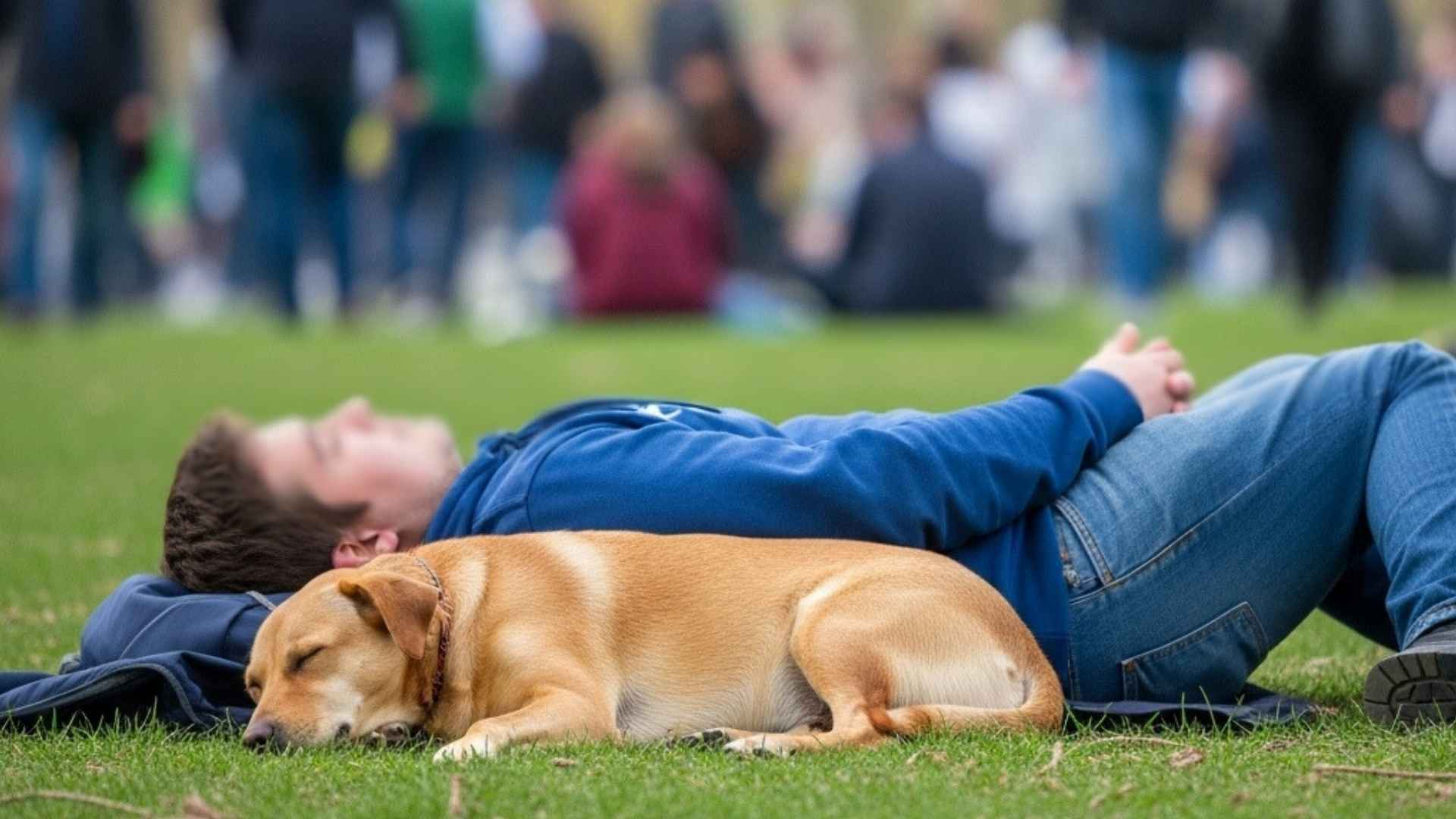“Wherever I am, if you’re there too, I’ll rest.” It’s what certain dogs seem to say through the way they behave.
Public spaces can be a challenge for dog owners. A walk in the park becomes a series of distractions: barking at other dogs, lunging at cyclists, jumping at strangers. And yes, not every dog handles crowds well. But some do.
And among those, a few rare breeds don’t just tolerate busy parks—they nap in them right beside you. They close their eyes in a setting most would find too stimulating. This calm doesn’t come from obedience. It comes from security. They’ve learned that being near you is enough, even when the world around is full of motion.
So, if you’ve ever hoped for a companion who matches your calm in public spaces, this article explores the breeds that naturally settle, rest, and sleep beside their people in the noise of the park.
Dog Breeds That Sleep Beside Owners In Busy Parks
1. Basset Hound
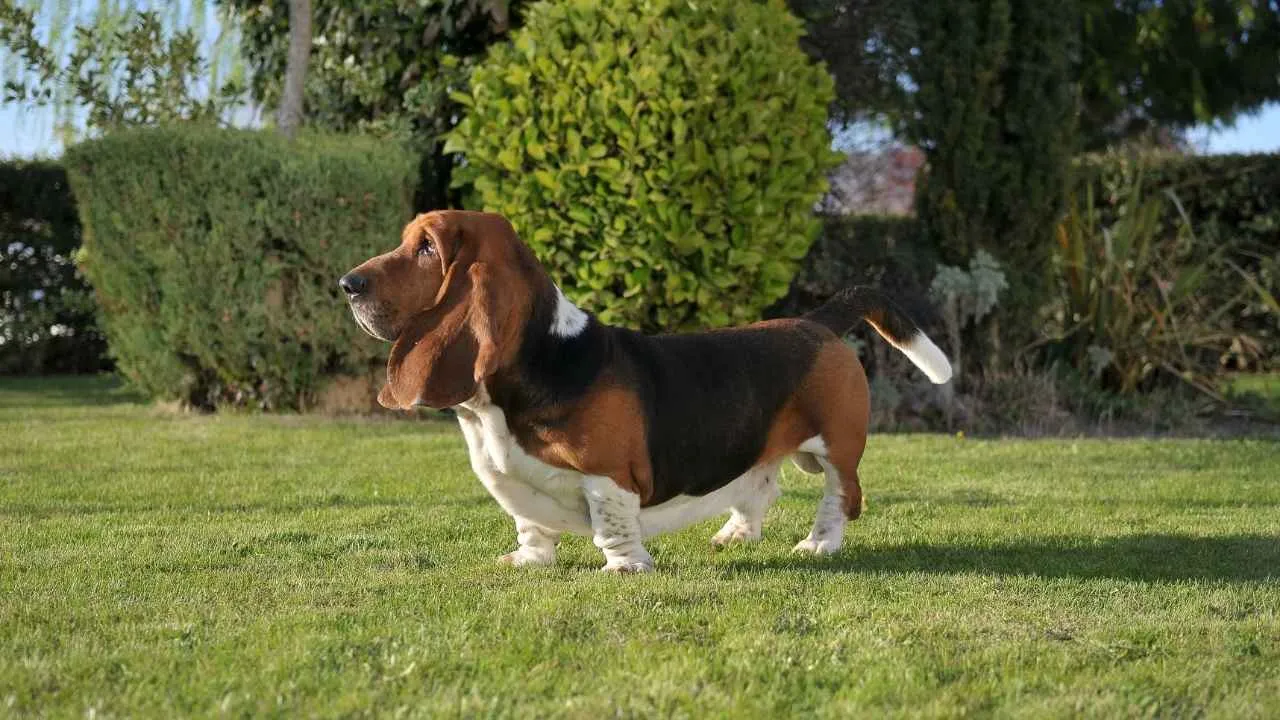
With a naturally low energy level and calm demeanor, Basset Hounds often lie down wherever they feel secure. They are unbothered by the foot traffic of crowded areas and show little reactivity to background noise. This calm makes them ideal for relaxed moments in busy parks.
Loyalty Through Proximity
These dogs form quiet bonds and often stay close to their owners’ side without prompting. If their person sits down, a Basset Hound is likely to curl up beside them without hesitation. They rest not from anxiety but as a normal extension of their low activity rhythm.
Environmental Tolerance
Their short stature and long torso keep them grounded, and they rarely wander off or bolt due to overstimulation, as stated in WebMD. They’re more observant than responsive, which helps them stay settled even around unfamiliar scents and sounds. This makes napping beside their owners feel natural.
Relaxed Scent-Driven Mindset
Though bred for scent tracking, the breed isn’t constantly on edge or needing to explore. Their approach is slow, deliberate, and non-disruptive in social environments. This steady mindset earns them a quiet presence in the dog world, especially during leisure outings.
2. Cavalier King Charles Spaniel

Cavaliers are known for their even temperament and can comfortably rest in busy, open-air settings. Their tolerance to unfamiliar sounds and movements allows them to stay relaxed on a blanket or bench beside their owner. They’re often content to nap without being disturbed by surrounding activity.
Deep Attachment to Owners
This small breed tends to stay physically close and frequently lies down wherever its human settles. Whether it’s a park, sidewalk cafe, or grassy field, they mirror the energy of the person they’re with. That closeness has made them one of the best dog breeds for emotional companionship.
Low Reactivity to External Distractions
Cavaliers are social, but they don’t respond frantically to passing dogs or children. Their reactions are soft, and their body language remains neutral in most casual encounters. This steady energy keeps them relaxed enough to rest even in the middle of a busy park.
Ideal Personality for Restful Companionship
Recognized among the most peaceful lap dogs, their small size and quiet nature make them ideal for shared downtime. They don’t require a constant stream of attention or stimulation to feel secure. If you’re searching for the right dog for calm public outings, this breed consistently ranks high.
3. Chinese Crested
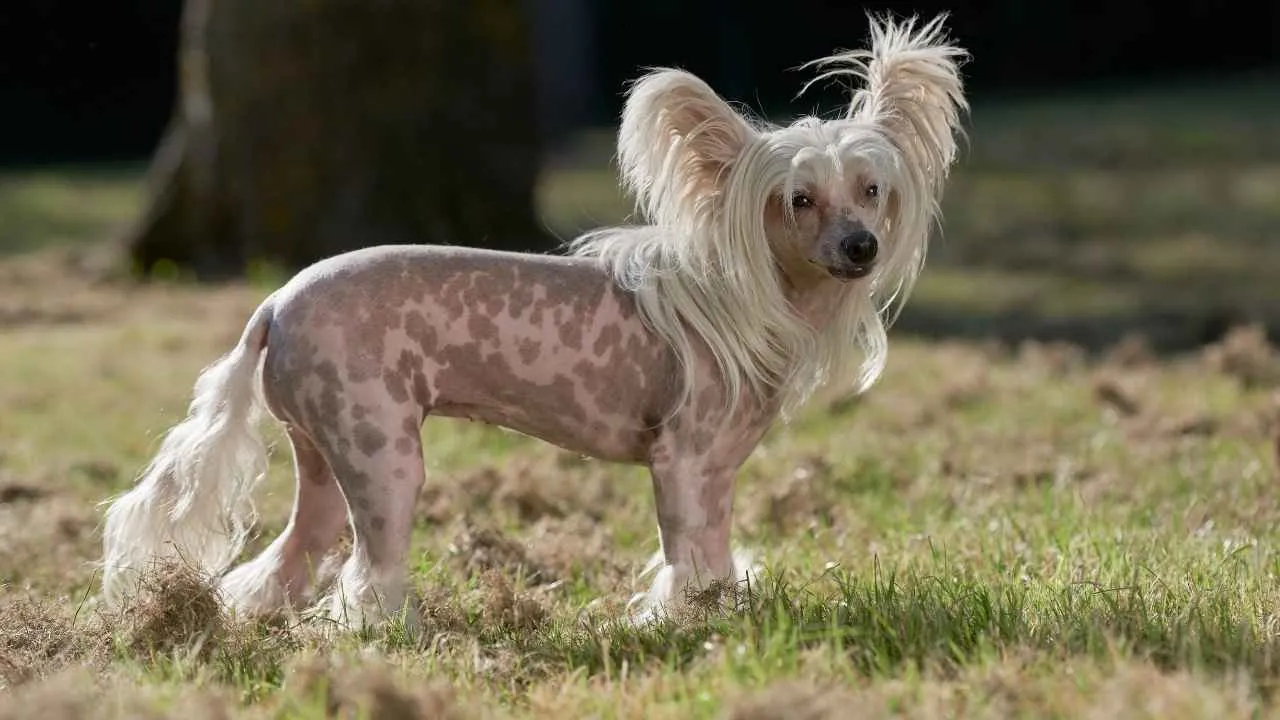
The Chinese Crested thrives on staying close to its owner and tends to remain still when in physical contact. This makes it common to see them curled up beside someone’s leg on a park bench. Their need for touch often overrides outside distractions like passing crowds or noise.
Light Body, Little Movement
Their delicate build and minimal body fat mean they tire quickly, especially under direct sun or wind. Once they settle down beside their person, they’re likely to stay put for long periods. This suits owners who prefer a restful pause over an active session.
Social but Not Energetic
They might observe other dogs or people nearby, but rarely feel compelled to leave their comfort zone. A short walk is often enough to satisfy their needs before resting again, as the AKC mentioned. They are often seen as the type of pet that prefers quiet companionship over stimulation.
Naturally Calm in Shared Spaces
This breed doesn’t rely on high energy to feel secure and adjusts well to public relaxation. It’s often comfortable sleeping in unfamiliar spots as long as its person is close. That behavior translates well to house settings and open-air environments alike.
4. Chow Chow
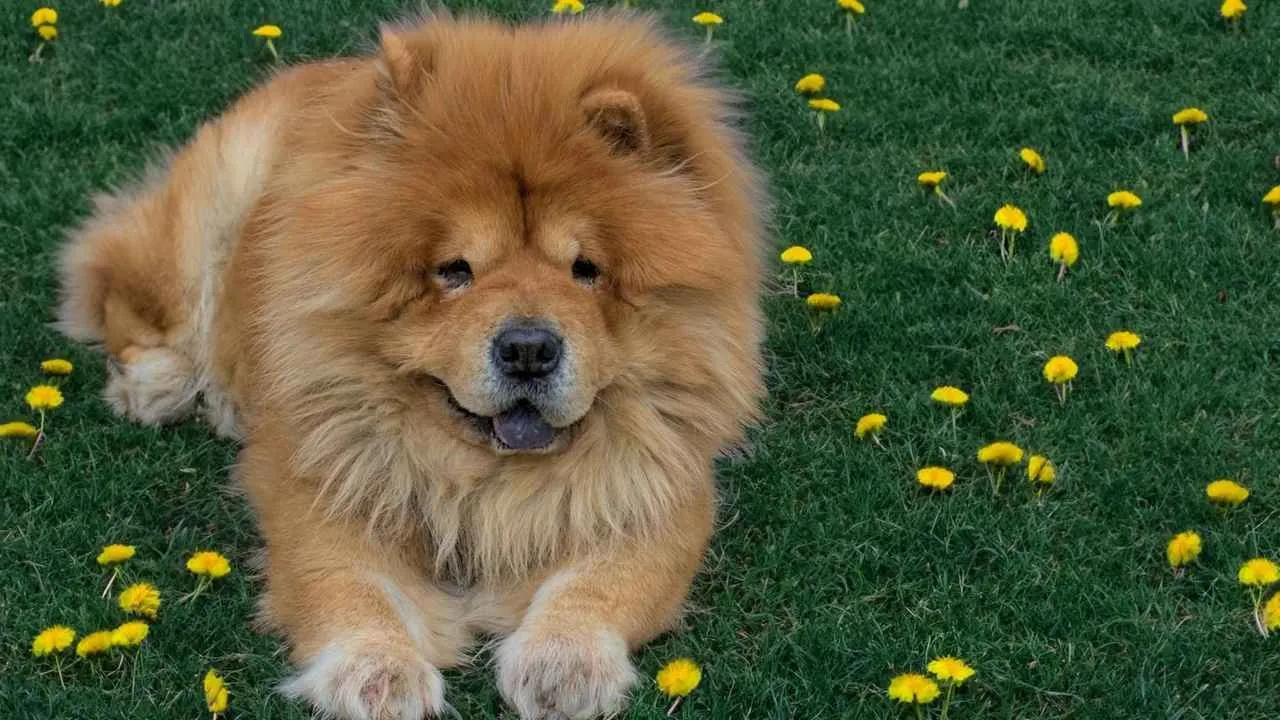
Chow Chows are naturally reserved and exhibit a low-reactivity temperament even in stimulating settings. In busy parks, they tend to stay anchored beside their owner rather than exploring or socializing. Their aloof nature allows them to relax without needing constant reassurance.
Low Energy Behavior
This medium-sized breed does not demand continuous movement or interaction, preferring to stay still during long pauses. If their human sits on a bench or lies on a blanket, the Chow Chow often chooses to lie beside them. Their tendency to conserve energy makes rest a frequent choice.
Strong Personal Space Awareness
Chow Chows are highly aware of their surroundings and prefer predictable, controlled engagement. They aren’t easily startled by foot traffic or loud sounds nearby, as long as their comfort zone is respected. This awareness helps them settle in high-activity public areas.
Confidence in Stillness
Rather than following every sound or scent, they observe from where they are and respond only when necessary. Their posture often remains upright or gently reclined, showing quiet alertness. This balance of watchfulness and stillness makes them suited to relaxed outdoor time.
5. English Bulldog
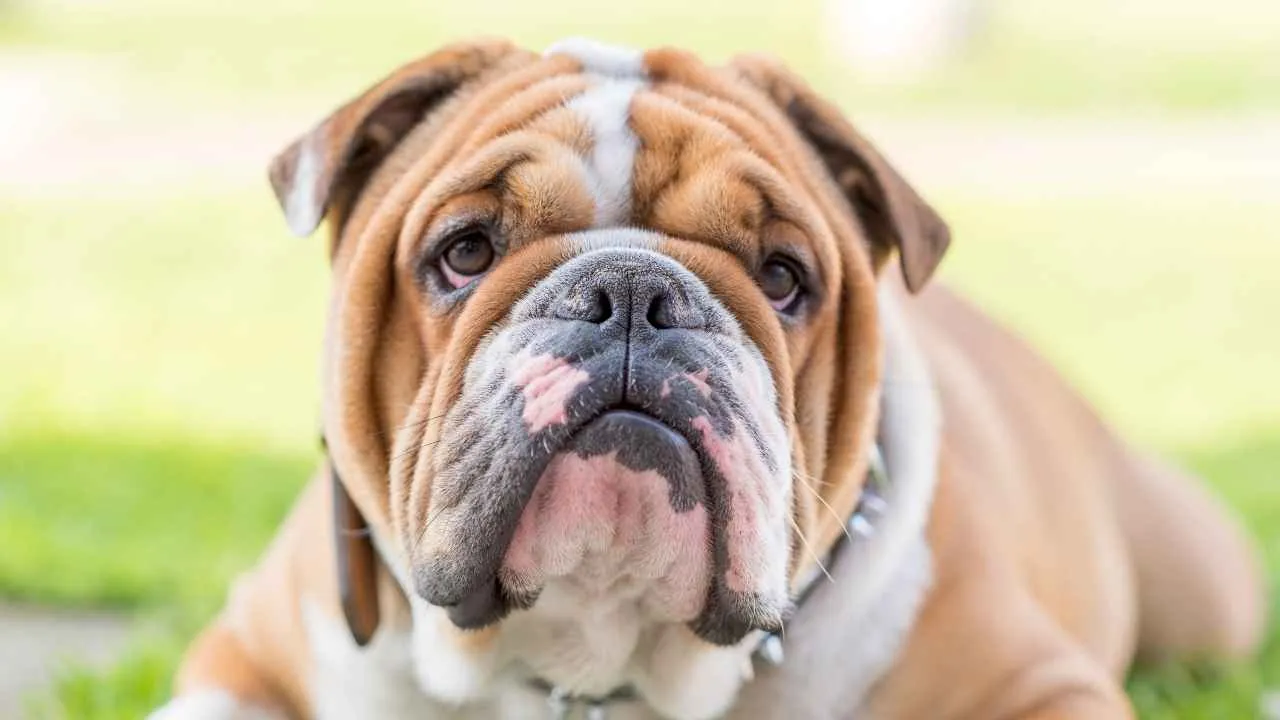
English Bulldogs are known for seeking cool, shaded spots and resting for long periods without stimulation. In a busy park, they’re more likely to stay lying beside their owner than wander into chaotic surroundings. Their desire for stillness aligns well with human downtime outdoors.
Low Sensitivity to Distractions
They show little concern for fast-moving people, bikes, or passing dogs unless directly provoked. This allows them to remain calm even as activity continues around them. That quiet tolerance keeps them settled next to their person during a picnic or rest.
Natural Affection Through Proximity
They often lean against their owner’s leg or lie close, preferring physical nearness over active play. This steady closeness is less about anxiety and more about comfort. The bulldog’s need for contact can lead to long naps beside humans in social spaces.
Relaxed Response to Noise
Their behavior stays consistent even with background chatter, barking, or music. Sudden sounds rarely cause them to shift position unless they affect them directly. Their laid-back response makes them blend into outdoor environments without drawing attention.
6. Great Dane
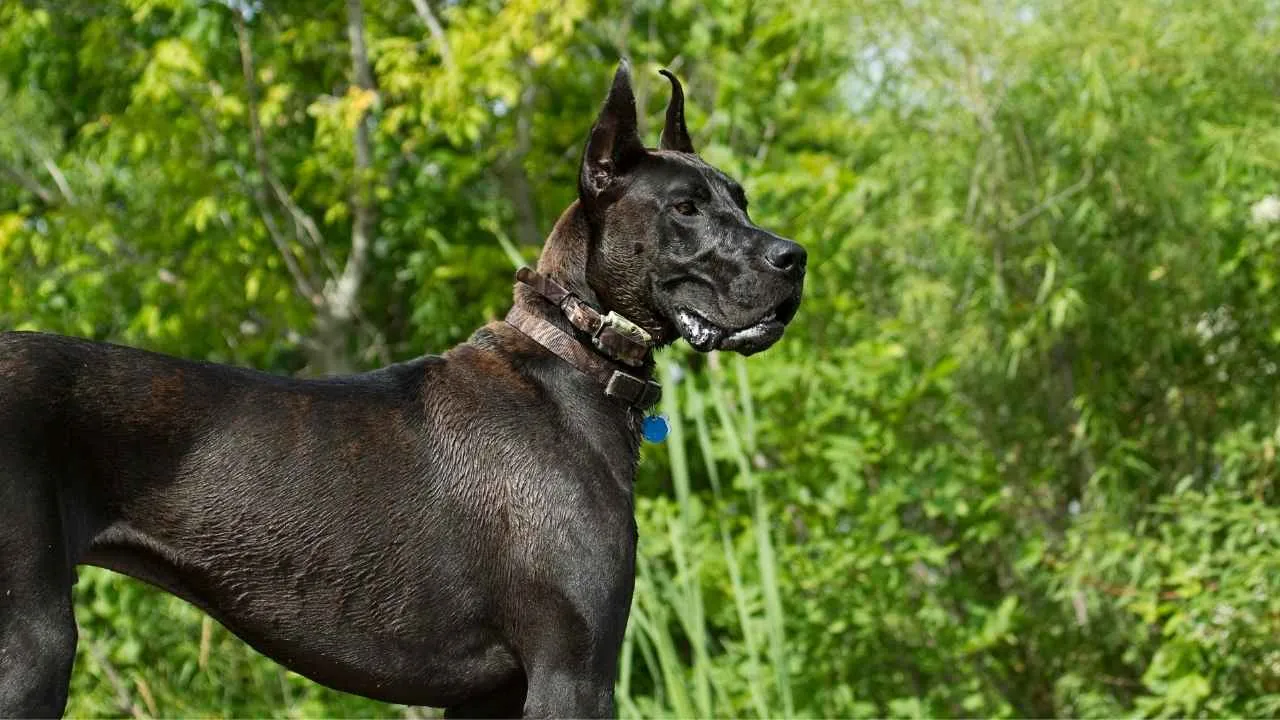
Great Danes often spend time simply observing their surroundings without reacting. Their tall stature lets them monitor movement calmly, whether it’s children playing or joggers passing by. This observant yet non-reactive nature helps them stay composed in public spaces.
Gentle Attachment to Owners
This breed tends to stay physically close without demanding attention. If their owner sits or stretches out, they are quick to follow and mirror the mood. Their emotional awareness makes them naturally align with their human’s rhythm, even in public.
Low-Energy Outdoor Behavior
Great Danes have short bursts of energy but spend most of their time resting or strolling slowly. They enjoy simply lying on the grass during park visits, often watching people without reacting. Their laid-back nature suits open, noisy environments where others are active.
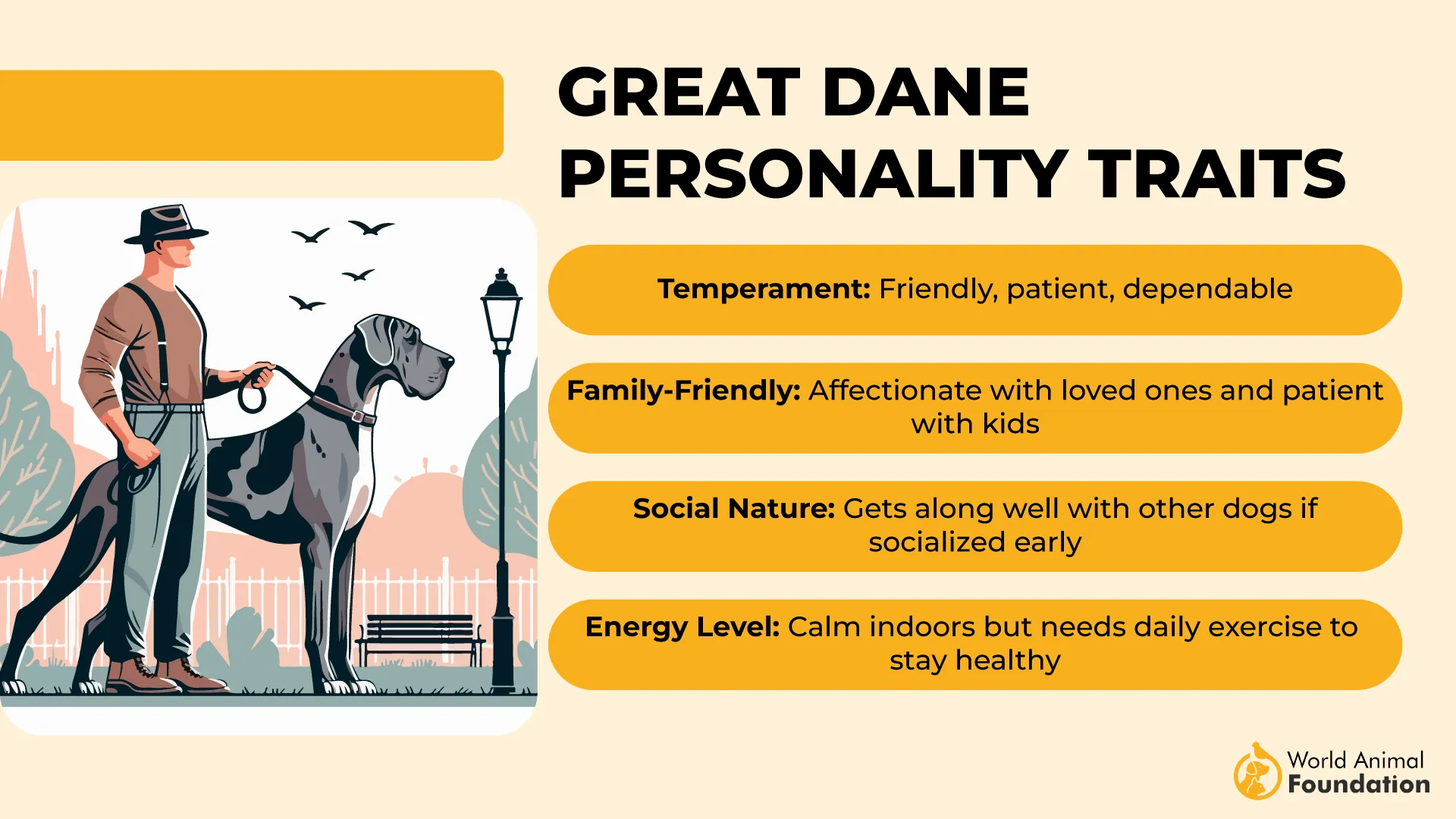
Balanced Response to Distractions
These dogs do not react quickly to unfamiliar sights or sudden noises unless provoked. This patience lets them settle into nap positions even when nearby activity continues. That consistency offers peace of mind to owners during park visits or social stops.
7. Greyhound
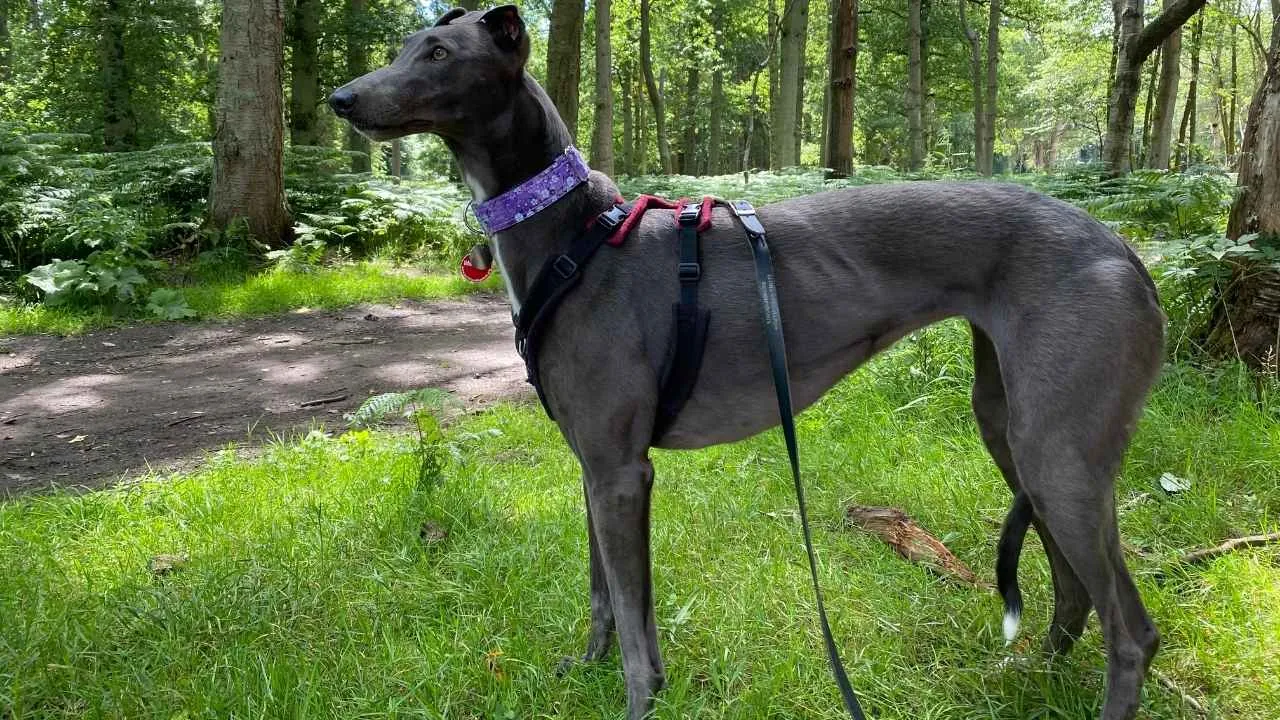
Did You Know: Greyhounds have a unique sleep style called “roaching,” where they lie on their backs with legs in the air — a sign they feel completely safe.
Greyhounds are naturally laid-back and thrive in peaceful environments. Their calm demeanor allows them to remain still and composed even when there’s noise or motion around. At parks, they quietly observe people without becoming overstimulated.
Natural Couch Behavior
Despite their athletic background, Greyhounds are known for being low-energy indoors. They often choose to lie down and nap instead of pacing or seeking activity. In a crowded park, they may rest beside their owner for long periods without needing interaction.
Strong Bonding Patterns
The breed prefers quiet companionship and will usually stay close to familiar people even without a leash. That tendency to lean into routine and predictable behavior helps them remain calm outdoors. This loyalty is especially noticeable during shared downtime.
Unbothered by Surroundings
With a temperament that leans toward quiet observation, they’re unlikely to respond to passing joggers or other pets. They observe more than they engage, which allows them to remain relaxed even in active public spaces. Their stability in these moments stands out.
Conclusion
Every dog brings its own rhythm. Some match a full day of movement, others lean toward rest. The above-listed breeds belong to the second group.
They aren’t couch potatoes by nature, but they don’t need constant activity to feel content. Their personalities fit easily into a relaxed lifestyle, even from the time they’re puppies. For anyone avoiding strenuous exercise or long walks, these dogs offer quiet companionship without fuss.
Whether it’s your first dog or one more to share life with, they meet the world gently. They rest when you rest. And sometimes, they sleep because you stayed still first.


